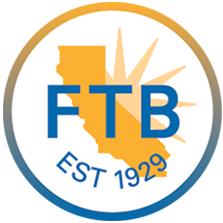Partnerships are a common business form in which two or more people share ownership and responsibility. Partnerships must comply with certain tax regulations, which include accurately filing Form 1065. The foundations of partnership taxation are examined below, along with the significance of Form 1065 for maintaining compliance.
What is Form 1065?
Form 1065, also known as the "U.S. Return of Partnership Income," is a tax form used by partnerships to submit their financial information to the IRS. Unlike corporations, partnerships do not pay taxes directly; instead, revenues are distributed to individual partners, who report them on their personal tax returns.
Form 1065 outlines income, deductions, and distributions to partners.
Key components and requirements of Form 1065
Key components:
- Partnership information: Partnership information includes your company's name, EIN, and principal place of operation.
- Income and expenses: Report your business's revenue from multiple sources, such as sales, interest, and rent. Don't forget to disclose all of your authorized expenses, including advertising and salary.
- Deductions and credits: Eligible deductions include depreciation and business travel expenditures. Credits, such as the R&D credit, can potentially lower your tax liability.
- Partner information: List each partner's ownership portion, tax identification number, and address.
- Schedules: Attach extra forms that give additional information, such as Schedule K-1 for partner allocations and Schedule M-1 for income reconciliation.
Requirements:
- Accuracy: All information on Form 1065 must be accurate and accompanied by documentation.
- Timeline: Form 1065 must be filed by the due date, which is typically the 15th day of the third month following the conclusion of the partnership's tax year. Form 7004 can be used to request extensions if more time is required.
- Compliance: When filling out Form 1065, partnerships must follow IRS regulations and procedures, including accurately reporting all income and deductions.
Understanding these key components and requirements is essential for partnerships to complete and file Form 1065 correctly and in accordance with IRS regulations.
When is the deadline to file Form 1065?
Form 1065 must be filed by the 15th of the third month after the end of a company's tax year. So, if the partnership follows the calendar year, Form 1065 must be filed by March 15. If the company requires an extension, it must file Form 7004 by the appropriate deadline for the tax year. When filed by the deadline, the corporation is automatically granted a six-month extension.
What Is the Penalty for Failing to File Form 1065?
The penalty for failing to file Form 1065 or filing it late is generally $235 for each month or part of a month the return is late, multiplied by the number of partners in the partnership for any portion of the partnership's tax year for which the return is due. This penalty may accrue for up to 12 months.
However, a penalty of $310 may be imposed for each failure to provide Schedule K-1 (and K-3, if applicable) to a partner on time, or for each failure to include all required information (or incorrect information) on Schedule K-1 (and K-3, if applicable). The maximum yearly penalty for entities with gross receipts greater than $5,000,000 is $3,783,000, while those with gross receipts equal to or less than $5,000,000 face a $1,261,000 fine. If correct information reporting is intentionally disregarded the penalty per instance increases to $630 or 10% of the total number of items required to be reported, whichever is greater. There is no maximum penalty for intentional disregard.
Tips for a smooth filing experience
- Gather all your financial documents well in advance.
- File electronically for faster processing and error-checking.
- Double-check your entries and calculations before submitting.
However, what happens if you're not quite ready and the deadline approaches? Do not be afraid! You can use Form 7004 to request an extension.
What is IRS Form 7004?
Form 7004, Application for Automatic Extension of Time To File Certain Business Income Tax, Information, and Other Returns, is filed by businesses in the United States to get an extension for filing certain business income taxes.
By filing IRS Form 7004, businesses can get up to 6 months of extension. Also, businesses don't need to provide a reason for filing form 7004 extension.
Who can file Form 7004?
Most businesses that want extra time to file their business income tax return can file Form 7004. Below business types can use Form 7004 extension to file business income tax:
C-corporations (Form 1120)
S-corporations (Form 1120S)
Partnerships (Form 1065)
Multiple-member LLCs as corporation and partnership
Trust, Estates and Others (Form 1041)
Note: The IRS recommends electronic filing over paper filing for its quick and instant status returns.
Where to E-file Form 7004?
With TaxZerone, you can complete your Form 7004 filing in just 3 simple steps.
Step 1 : Choose the tax year and enter the information requested.
Step 2 : Determine the sum payable by providing an estimate of total tax, payments, and credits.
Step 3 : Send the return to the IRS.











